Cutting boards come in a variety of materials—including glass, plastic, wood, and bamboo—but not all of these materials are created equal. In order for you to select the best cutting board, you must first choose the right material. In fact, you may even want to select two different cutting boards to use for different foods. In addition, there are some other factors to consider, such as size, type of grain, and level of maintenance required. By reviewing all of these options, you can select the perfect cutting board for your kitchen.
StepsMethod 1Method 1 of 3:Choosing the Right Material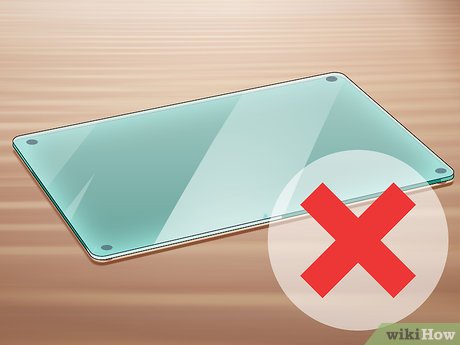
1Avoid glass. Glass cutting boards are a popular choice because they look nice in your kitchen. However, glass cutting boards have been shown to dull brand new kitchen knives in as little as 10 strokes. If you happen to have a glass cutting board, use it as a serving platter or cheese tray instead.XOther hard cutting board materials—like marble, granite, ceramic, and composite—can do similar damage to your knives, and should be avoided.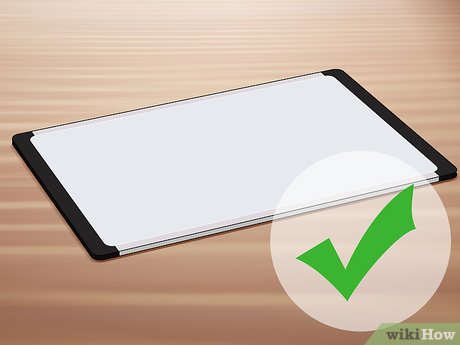
2Choose the right kind of plastic. Plastic cutting boards can be a great option. They are affordable, easy to clean, and safe for knives. However, not all plastic boards are the same!XAvoid slick or smooth plastic, as this can cause knives to slip.Acrylic plastic boards can do almost as much damage to your knives as glass.Plastic cutting boards made of polyethylene or polypropylene are the best choice.A good choice is the Oxo Carving and Cutting Board for $24.99 (available at Bed, Bath, and Beyond, Sur la Table, and JC Penny).
3Opt for wood. Wood cutting boards are the classic choice. These are far and away the most popular cutting boards for chefs and amateurs alike. Wood cutting boards are lovely, they last a long time, and they are great for your knives. Wood cutting boards are available in many types of wood, including oak, maple, and teak.Teak is a great option because it absorbs very little liquid, so it will take longer for the board to wear out.A good choice is the Proteak Edge Grain Teak Cutting Board for $92.59 (available on Amazon).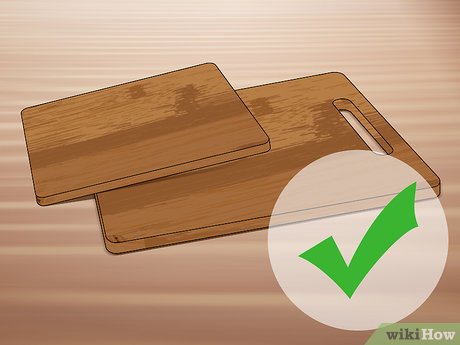
4Choose a bamboo board for sustainability. Bamboo cutting boards are very similar to wood boards. They last a long time, they are wonderful for your knives, and they are lovely to have out in your home. Additionally, bamboo boards are a sustainable, environmentally friendly choice, since bamboo is a fast-growing, highly renewable resource.XBamboo boards are lighter in weight than wood boards.Bamboo boards don’t need to be oiled as often as wood boards.A good choice is the Totally Bamboo 20-7930 3-Piece Cutting Board Set for $15 (on Amazon).Method 2Method 2 of 3:Using Different Boards for Different Foods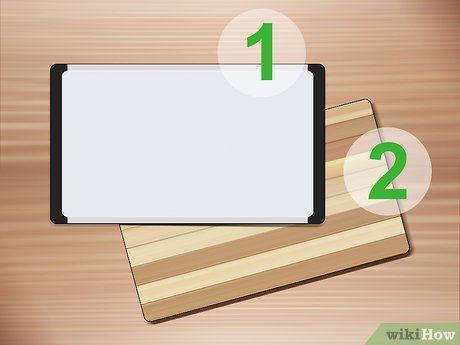
1Select two cutting boards. Most chefs advocate for keeping at least two cutting boards at home: one wood and one plastic. This enables you to keep raw protein away from fruits and vegetables and maintain a sanitary work environment.X
2Use plastic boards for meat or fish. Bacteria from raw meat are best kept away from your fruits and vegetables. As such, it is best to use a separate cutting board for these foods. Additionally, the oils from fish can sometimes seep into wood fibers and leave a lasting smell on your wood cutting boards. Consider keeping a plastic cutting board at home to use for meat and fish.XA thin plastic cutting board can be placed on top of a wood board for ease of use.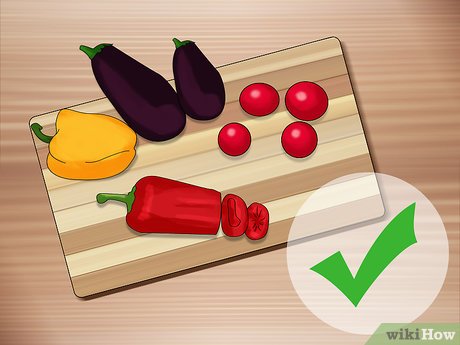
3Select wood or bamboo for produce. Wood (or bamboo) cutting boards are the best choice for fruits and vegetables. These boards are built to last, and will also help extend the life of your knives.XCooked meats are also safe to carve on your wood (or bamboo) cutting board.Method 3Method 3 of 3:Considering Other Factors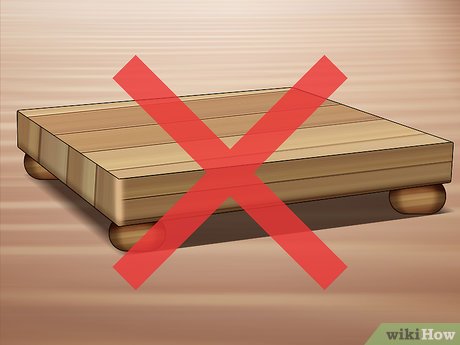
1Avoid cutting boards with “feet.” You want to get the most out of your cutting board, and this means being about to use both sides. Stay away from cutting boards that have “feet” on the bottom, or are otherwise not reversible. By using both sides, you essentially get two cutting boards in one.X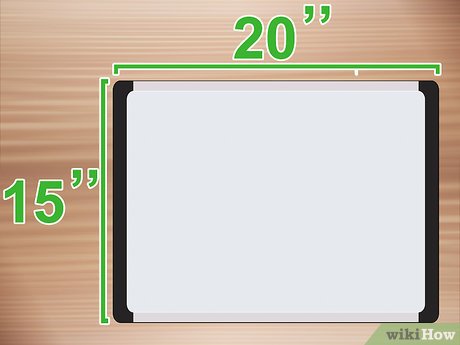
2Select the right size. Experts chefs suggest choosing a cutting board that is 15 by 20 inches (38 to 50 cm) in size. This gives you plenty of room to work safely and effectively as you cut.X
3Choose between end-grain or edge-grain. When opting for a wood or bamboo cutting board, you will have the opportunity to choose end-grain (meaning the board is grafted from many small pieces of wood in a checkerboard pattern) or edge-grain (meaning the strips of wood are laid side-by-side).In bamboo boards, edge-grain boards are sturdier, and have been shown to last longer.XIn wood boards, end-grain boards are a bit easier on knives.XUltimately, choosing end-grain or edge-grain will come down to the look you want for your kitchen.X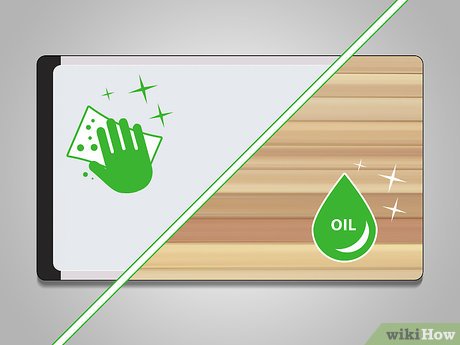
4Consider the level of maintenance required. By and large, wood cutting boards are the best choice for durability, beauty, and protection of your knives (with bamboo as a close second). However, wood (or bamboo) cutting boards can be cumbersome to wash, and they need to be oiled regularly. Plastic cutting boards, on the other hand, are often dishwasher safe and require no additional maintenance. If you do not have the time to regularly maintain your cutting board, plastic may be a better choice for you.X








